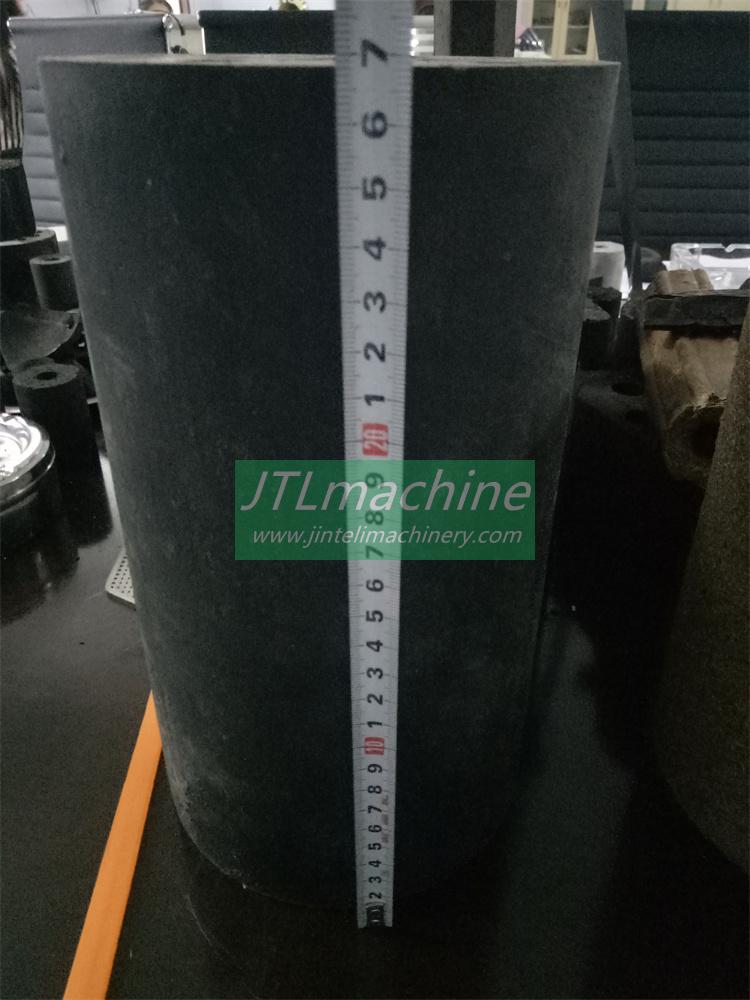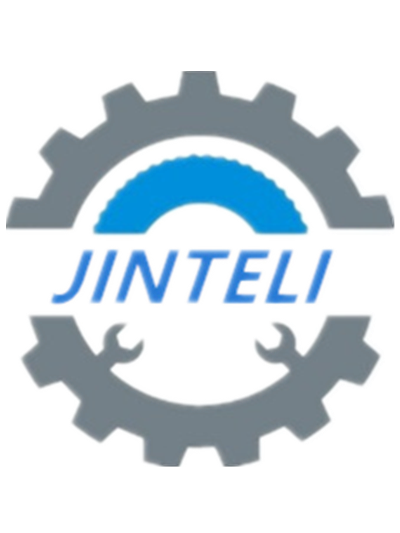Table of Contents
تعظيم الكفاءة: نصائح لتحسين عمليات آلة ضغط المعادن
تعظيم الكفاءة: نصائح لتحسين عمليات آلات ضغط المعادن
في مجال التصنيع الصناعي، تلعب آلات ضغط المعادن دورًا محوريًا في تشكيل المكونات المعدنية المختلفة المستخدمة في قطاعات متنوعة. هذه الآلات، التي تشمل آلات الضغط وآلات ضغط المسحوق وغيرها، هي أصول لا غنى عنها للشركات التي تسعى جاهدة لتلبية معايير الجودة الصارمة مع الحفاظ على مستويات إنتاجية عالية. ومع ذلك، للاستفادة الكاملة من قدرات هذه الآلات وتحقيق أقصى قدر من الكفاءة، فمن الضروري للمشغلين والمديرين تنفيذ استراتيجيات التحسين الفعالة.

لطالما كانت آلات ضغط المعادن وآلات الضغط وآلات ضغط المسحوق أدوات لا غنى عنها في عمليات التصنيع في مختلف الصناعات. تلعب هذه الآلات دورًا حاسمًا في تشكيل الأجزاء المعدنية، وتشكيل التصميمات المعقدة، وإنتاج المواد المسحوقة لمجموعة واسعة من التطبيقات. مع استمرار تقدم التكنولوجيا، تتقدم أيضًا أدوات التصنيع الأساسية هذه، مما يؤدي إلى زيادة الكفاءة والدقة والتنوع في عمليات الإنتاج.
أحد أبرز التطورات في تقنيات الضغط على الثقب وضغط المسحوق هو تكامل التحكم الرقمي بالكمبيوتر ( أنظمة CNC). أحدثت تقنية CNC ثورة في التصنيع من خلال أتمتة تشغيل هذه الآلات، مما يسمح بعمليات دقيقة للغاية وقابلة للتكرار. باستخدام ماكينات الضغط CNC، يمكن للمشغلين برمجة مسارات ومعلمات الأدوات المعقدة، مما يتيح إنتاج الأجزاء المعقدة بأقل قدر من التدخل البشري. وبالمثل، توفر آلات ضغط المسحوق CNC تحكمًا دقيقًا في الضغط والسرعة وملء القالب، مما يؤدي إلى ضغط موحد وتحسين جودة المنتج.
بالإضافة إلى تكامل CNC، ساهمت التطورات في علم المواد في تطوير آلات أكثر متانة وقابلة للتآكل. أدوات مقاومة لآلات الضغط والضغط على المسحوق. على سبيل المثال، توفر أدوات كربيد التنغستن والسيراميك صلابة فائقة ومقاومة للتآكل مقارنة بفولاذ الأدوات التقليدية، مما يطيل عمر الأداة ويقلل تكاليف الصيانة. علاوة على ذلك، أدت التطورات في الطلاءات ومعالجات الأسطح إلى تحسين أداء الأداة عن طريق تقليل الاحتكاك وتقليل الالتصاق ومنع التآكل، وبالتالي إطالة عمر المكونات المهمة.
هناك اتجاه رئيسي آخر في تقنيات الضغط على الثقب وضغط المسحوق وهو اعتماد أجهزة كهربائية مؤازرة. محركات الأقراص. على عكس الأنظمة الهيدروليكية أو الهوائية التقليدية، التي تعتمد على طاقة السوائل للتشغيل، تستخدم المحركات الكهربائية المؤازرة محركات كهربائية وأنظمة تحكم دقيقة لتحقيق حركة عالية السرعة وعالية الدقة. ولا يؤدي ذلك إلى زيادة أوقات الدورات وتحسين الإنتاجية فحسب، بل يتيح أيضًا تحكمًا أفضل في عملية التشكيل، مما يؤدي إلى تفاوتات أكثر صرامة وجودة أفضل للأجزاء. بالإضافة إلى ذلك، توفر محركات الأقراص الكهربائية المؤازرة فوائد كفاءة استخدام الطاقة، حيث إنها تستهلك الطاقة فقط عند الحاجة إليها، مما يقلل من استهلاك الطاقة الإجمالي وتكاليف التشغيل. آلات ضغط المسحوق . من خلال المراقبة المستمرة لمعلمات التشغيل الرئيسية مثل درجة الحرارة والاهتزاز وتآكل الأدوات، يمكن للمصنعين تحديد المشكلات المحتملة قبل أن تتصاعد إلى فترات توقف مكلفة أو تعطل المعدات. تسمح الصيانة التنبؤية بجدولة استباقية لأنشطة الصيانة، وتقليل وقت التوقف غير المخطط له وزيادة وقت تشغيل الماكينة إلى الحد الأقصى، وبالتالي تحسين كفاءة الإنتاج وفعالية المعدات بشكل عام.
علاوة على ذلك، ساهمت التطورات في الأتمتة والروبوتات في تعزيز قدرات آلات الضغط وضغط المسحوق. تعمل أنظمة معالجة المواد الآلية، ومبدلات الأدوات الآلية، والروبوتات الموجهة بالرؤية على تمكين التكامل السلس لهذه الآلات في خلايا تصنيع مرنة وبيئات إنتاج مطفأة الأضواء. لا يؤدي هذا إلى تحسين الإنتاجية والإنتاجية فحسب، بل يعزز أيضًا السلامة في مكان العمل من خلال تقليل الحاجة إلى التدخل اليدوي في المهام الخطرة أو المتكررة.
في الختام، يتم تشكيل مستقبل التصنيع من خلال التقدم المستمر في تقنيات الضغط على المثقاب وضغط المسحوق. بدءًا من تكامل CNC والمواد المتقدمة وحتى المحركات الكهربائية المؤازرة والصيانة التنبؤية، تعمل هذه الابتكارات على تحسين الإنتاجية والجودة والكفاءة عبر مجموعة واسعة من الصناعات. مع استمرار الشركات المصنعة في تبني الأتمتة والروبوتات والرقمنة، سيظل دور آلات الضغط وضغط المسحوق أساسيًا في تطور عمليات التصنيع الحديثة.
Metal compressing machines, punch press machines, and powder pressing machines have long been indispensable tools in manufacturing processes across various industries. These machines play a crucial role in shaping metal parts, forming intricate designs, and producing powdered materials for a wide range of applications. As technology continues to advance, so too do these essential manufacturing tools, leading to greater efficiency, precision, and versatility in production processes.
One of the most notable advancements in punch press and powder pressing technologies is the integration of computer numerical control (CNC) systems. CNC technology has revolutionized manufacturing by automating the operation of these machines, allowing for highly precise and repeatable processes. With CNC punch press machines, operators can program complex tool paths and parameters, enabling the production of intricate parts with minimal human intervention. Similarly, CNC powder pressing machines offer precise control over pressure, speed, and die filling, resulting in uniform compaction and improved product quality.
In addition to CNC integration, advancements in materials science have contributed to the development of more durable and wear-resistant tooling for punch press and powder pressing machines. Tungsten carbide and ceramic tooling, for example, offer superior hardness and abrasion resistance compared to traditional tool steels, prolonging tool life and reducing maintenance costs. Furthermore, advancements in coatings and surface treatments have enhanced tool performance by reducing friction, minimizing adhesion, and preventing corrosion, thereby extending the lifespan of critical components.
Another key trend in punch press and powder pressing technologies is the adoption of servo-electric drives. Unlike traditional hydraulic or pneumatic systems, which rely on fluid power for actuation, servo-electric drives utilize electric motors and precision control systems to achieve high-speed and high-accuracy motion. This not only results in faster cycle times and improved productivity but also enables finer control over the forming process, leading to tighter tolerances and better part quality. Additionally, servo-electric drives offer energy efficiency benefits, as they consume power only when needed, reducing overall energy consumption and operating costs.
Furthermore, the integration of sensors and real-time monitoring systems has enabled predictive maintenance strategies for punch press and powder pressing machines. By continuously monitoring key operating parameters such as temperature, vibration, and tool wear, manufacturers can identify potential issues before they escalate into costly downtime or equipment failure. Predictive maintenance allows for proactive scheduling of maintenance activities, minimizing unplanned downtime and maximizing machine uptime, thereby optimizing production efficiency and overall equipment effectiveness.
Moreover, advancements in automation and robotics have further enhanced the capabilities of punch press and powder pressing systems. Automated material handling systems, robotic tool changers, and vision-guided robotics enable seamless integration of these machines into flexible manufacturing cells and lights-out production environments. This not only improves productivity and throughput but also enhances workplace safety by reducing the need for manual intervention in hazardous or repetitive tasks.
In conclusion, the future of manufacturing is being shaped by continuous advancements in punch press and powder pressing technologies. From CNC integration and advanced materials to servo-electric drives and predictive maintenance, these innovations are driving improvements in productivity, quality, and efficiency across a wide range of industries. As manufacturers continue to embrace automation, robotics, and digitalization, the role of punch press and powder pressing machines will remain central to the evolution of modern manufacturing processes.






